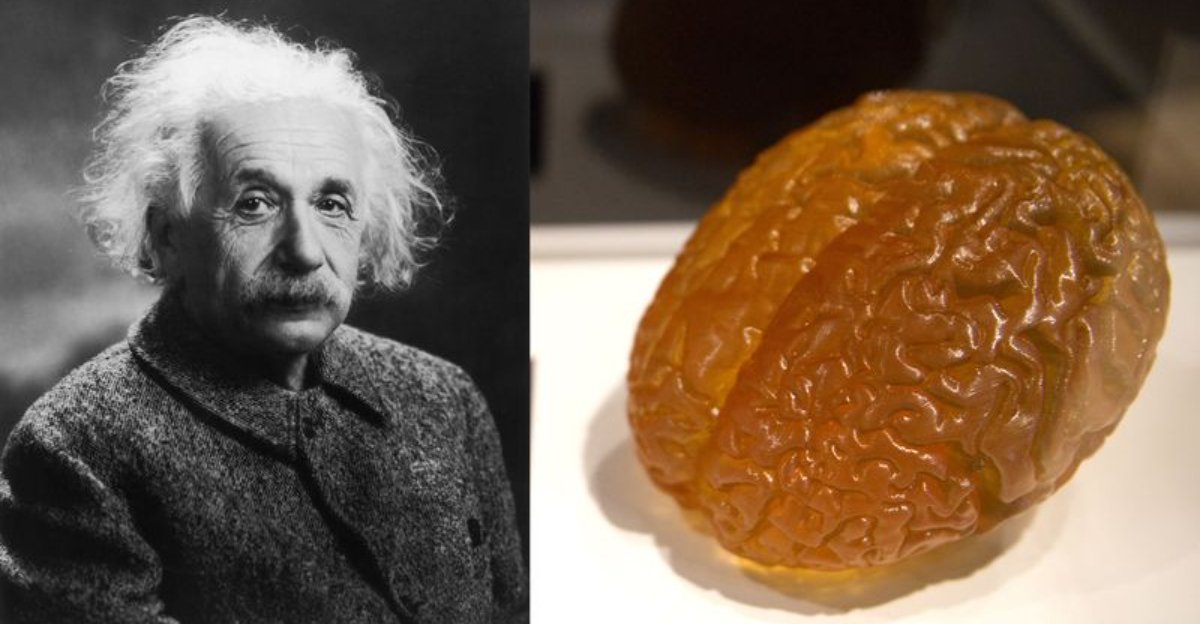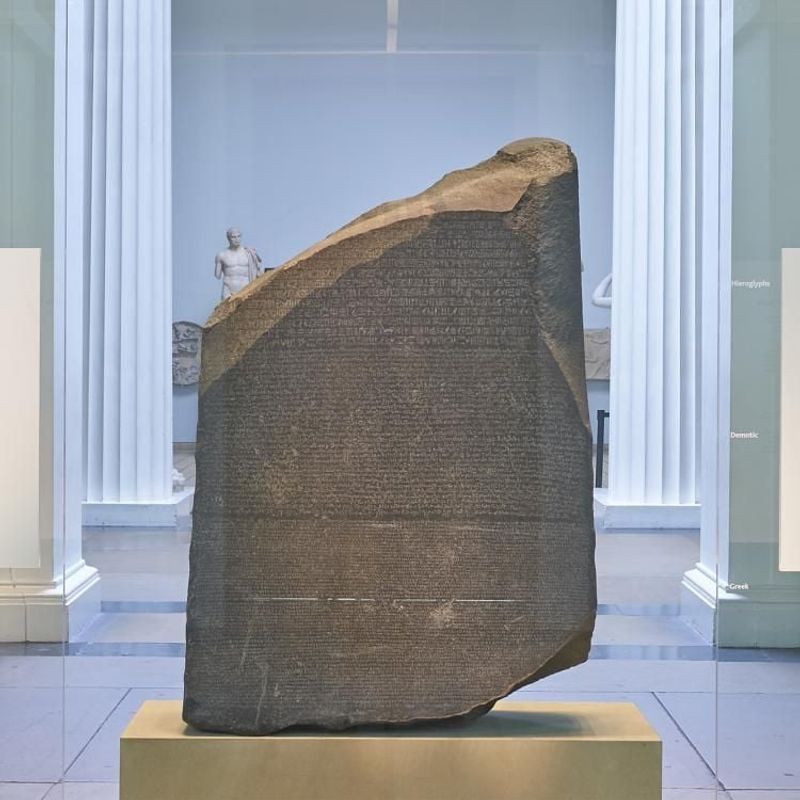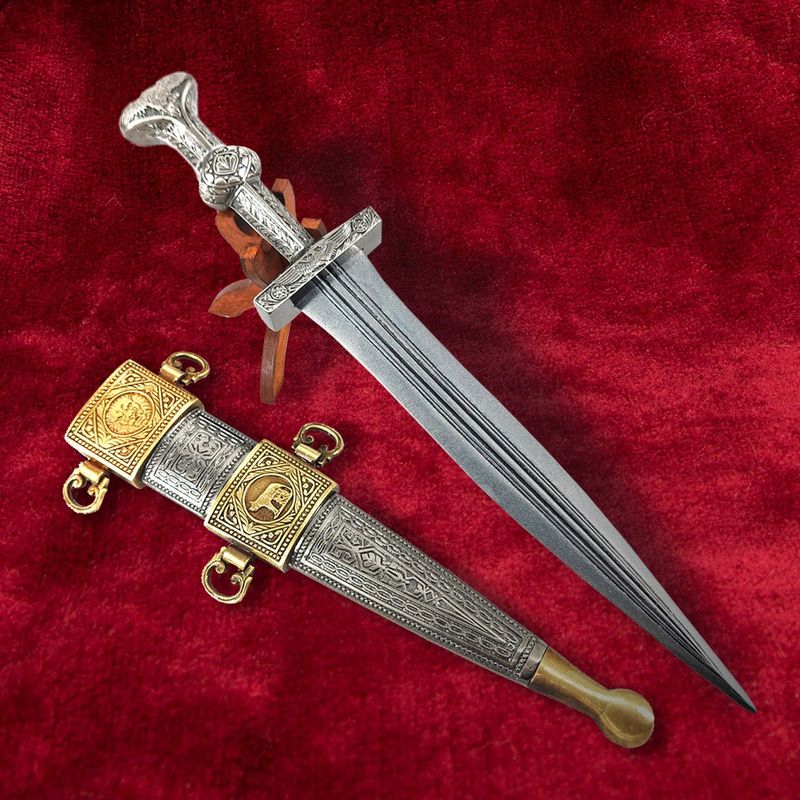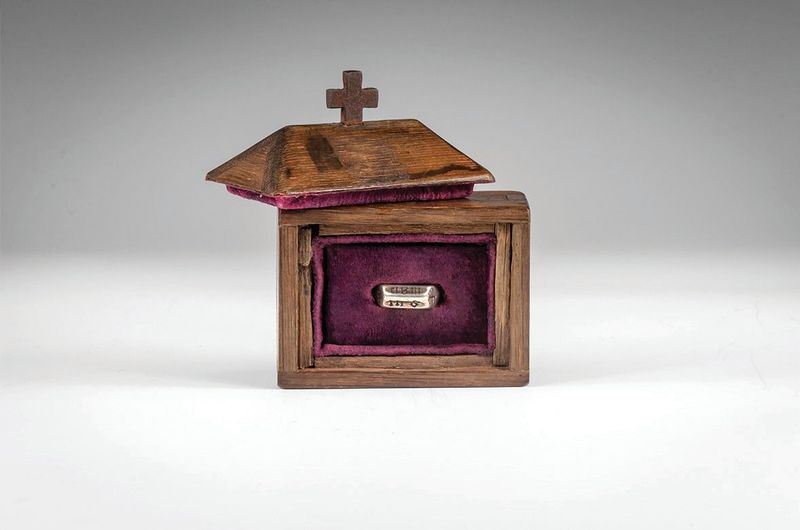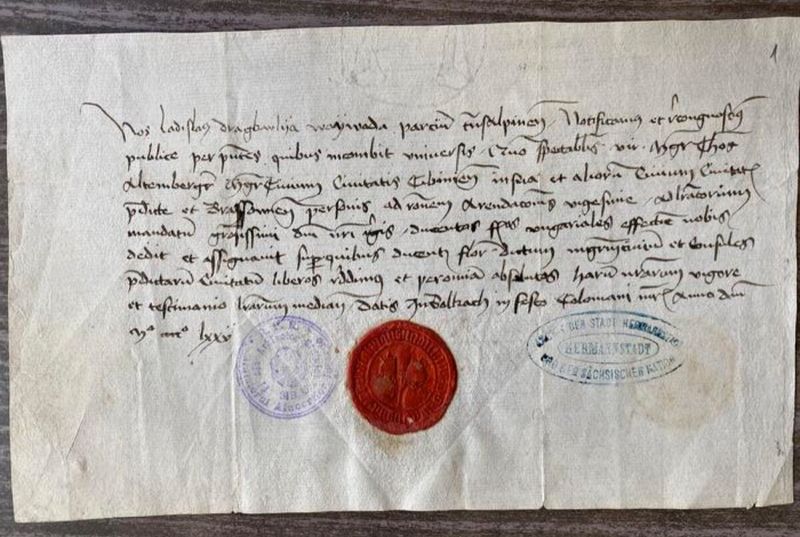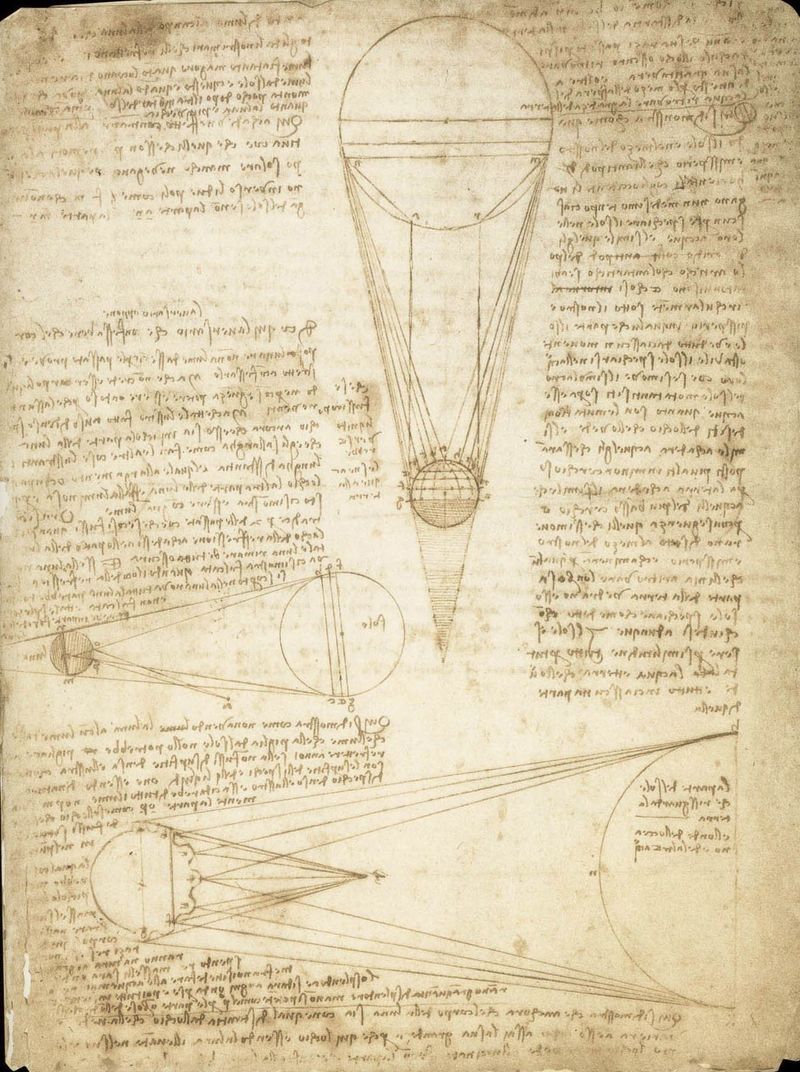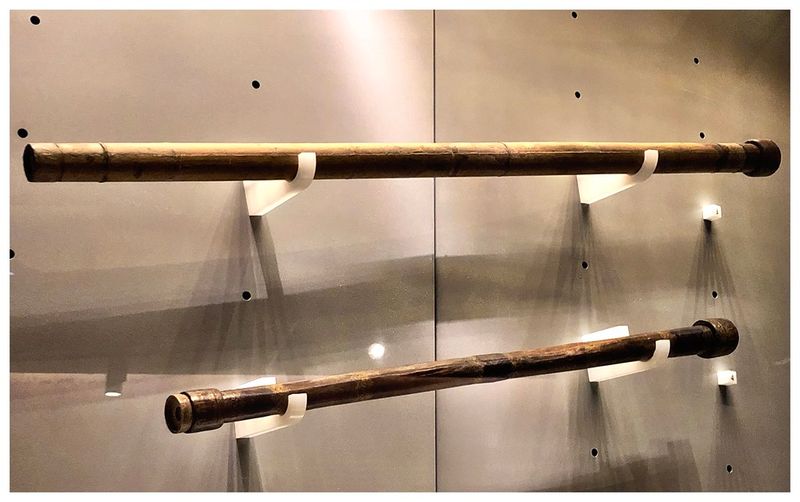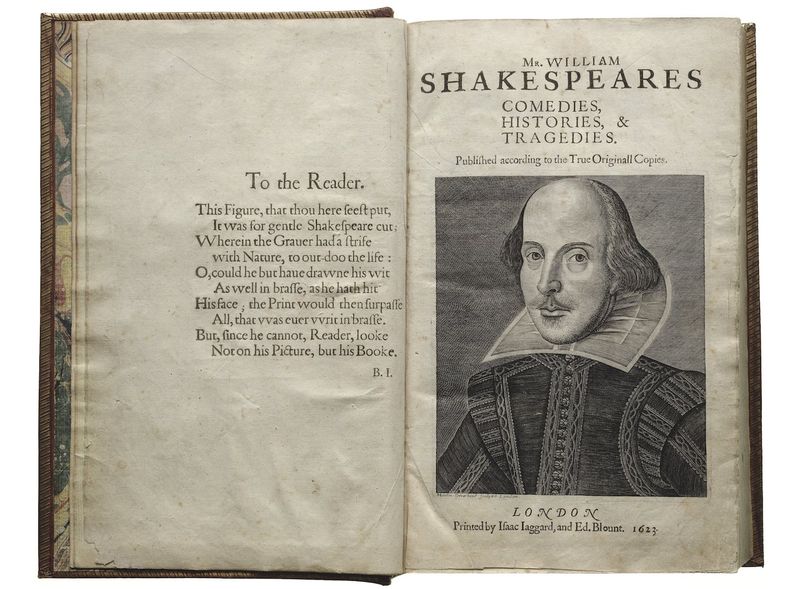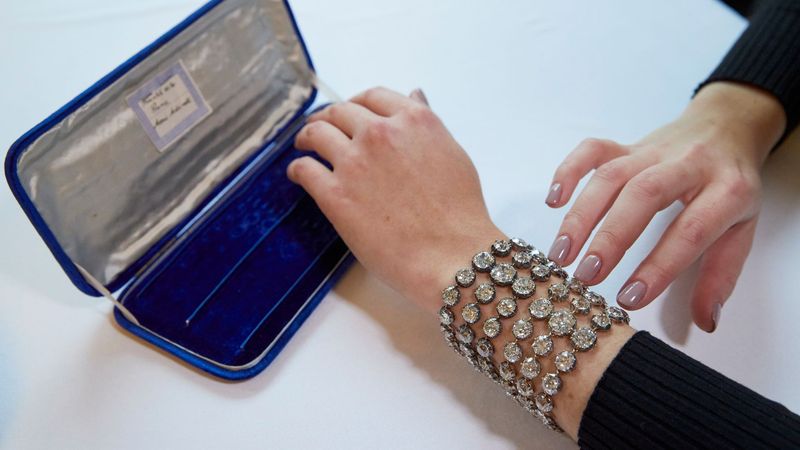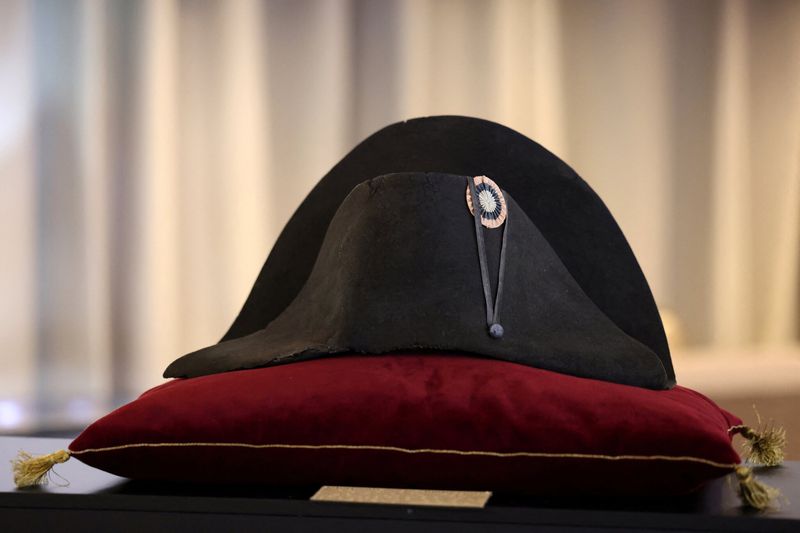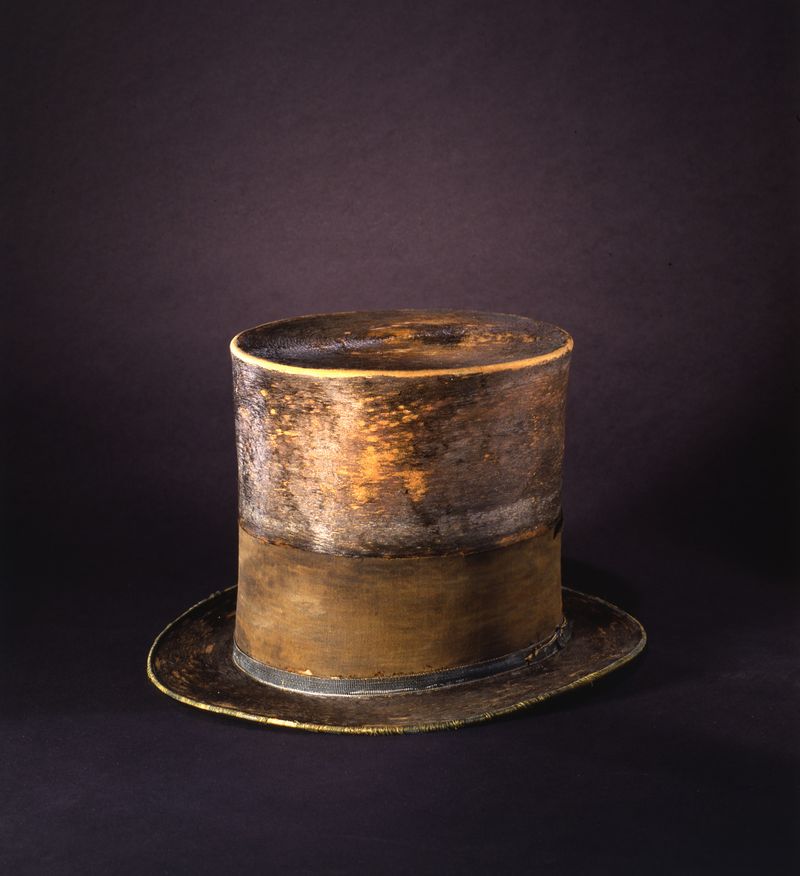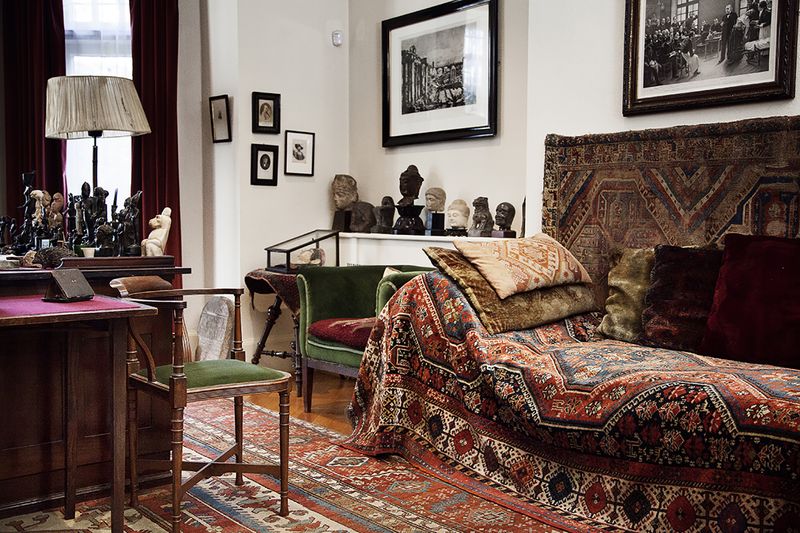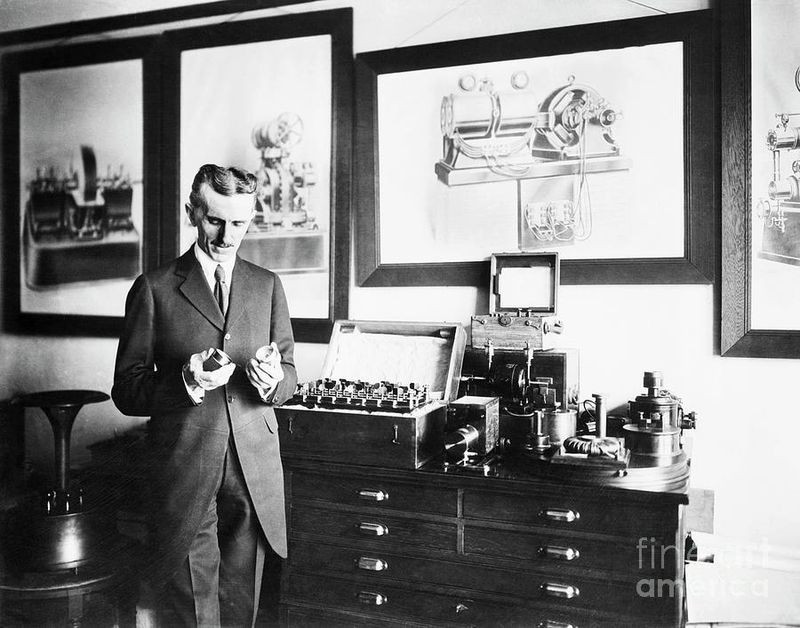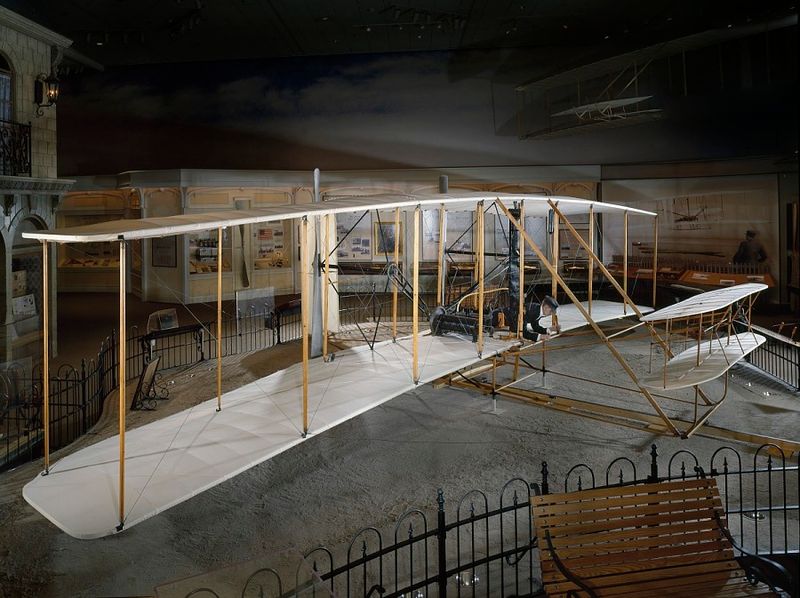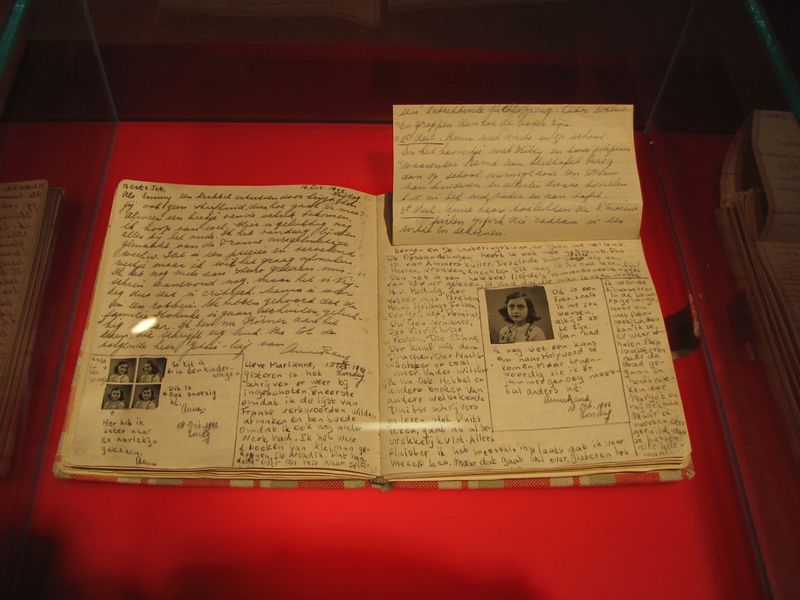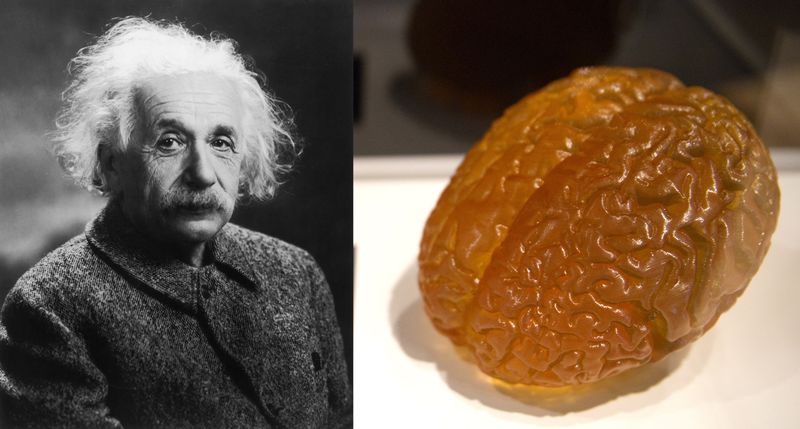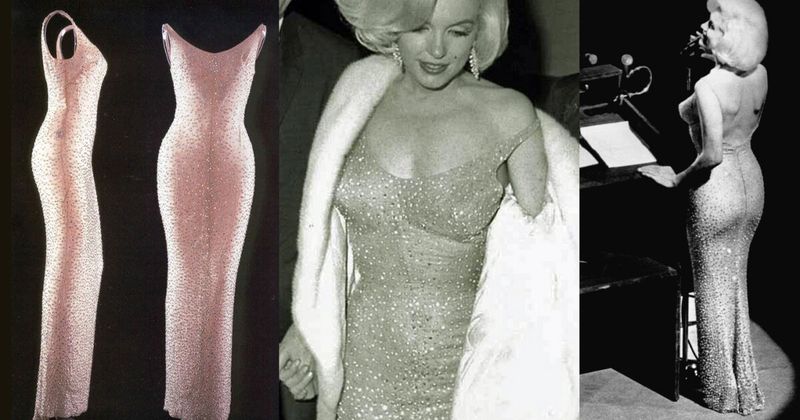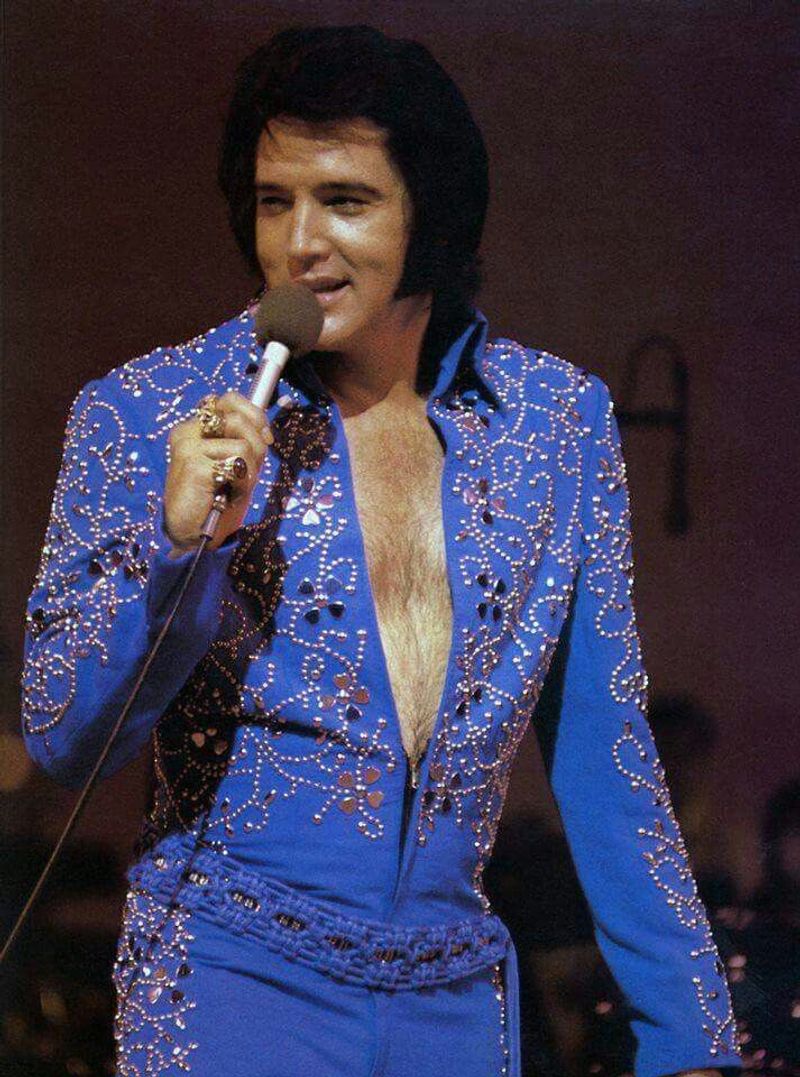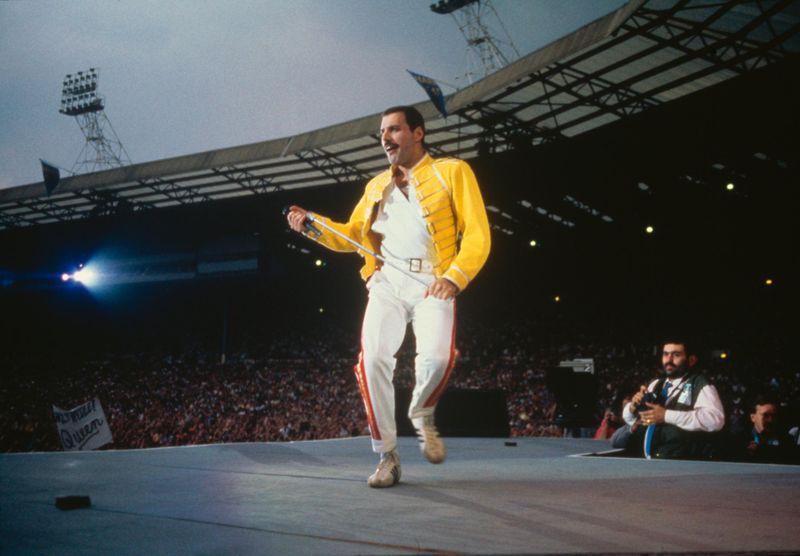History has left behind a trail of artifacts that give us insights into the lives and legacies of historic figures. These objects, imbued with personal significance and historical value, have endured the test of time. From ancient treasures to modern memorabilia, each item tells its own story, connecting us to the past in a tangible way. This collection of 30 artifacts spans centuries and continents, showcasing the diversity and richness of our shared heritage. Explore these remarkable remnants of history and discover the stories they have to tell.
1. King Tutankhamun’s Golden Mask (c. 1323 BC)
King Tutankhamun’s mask is a masterpiece of ancient Egyptian art, symbolizing the grandeur of the pharaoh’s era. Crafted from solid gold and adorned with lapis lazuli, the mask exudes royal elegance. It was discovered in 1922 by Howard Carter in the young king’s tomb, nestled in the Valley of the Kings. This iconic piece not only represents Tutankhamun’s divine status but also serves as a window into the beliefs and artistry of ancient Egypt. Its preservation offers a rare glimpse into an opulent past that continues to enchant historians and archaeologists alike.
2. The Rosetta Stone (196 BC)
The Rosetta Stone is the key to understanding Egyptian hieroglyphs, featuring the same decree in Greek, Demotic, and hieroglyphics. Discovered in 1799 by French soldiers in Egypt, this granodiorite stele became instrumental in deciphering the ancient script. Its significance lies in bridging linguistic gaps, allowing scholars to unlock the secrets of an ancient civilization. The stone’s inscriptions detail a royal decree, reflecting the political and cultural dynamics of the Ptolemaic era. Now housed in the British Museum, it remains a vital artifact for both its historical and linguistic value.
3. Julius Caesar’s Dagger (44 BC?)
Legend has it that a dagger attributed to Julius Caesar lies at the bottom of the Rhine River. This ceremonial pugio, believed to have been owned by Caesar, embodies the intrigue of ancient Roman politics. Whether used in battle or as a symbol of power, the dagger’s story intertwines with the history of one of Rome’s most iconic leaders. Though its authenticity remains debated, this artifact continues to captivate those drawn to the mysteries of Caesar’s life and death. Its discovery remains a tantalizing puzzle for historians and treasure hunters alike.
4. The Terracotta Army (210–209 BC)
The Terracotta Army, buried with China’s first emperor Qin Shi Huang, stands as a testament to ancient engineering and artistry. Discovered in 1974 by local farmers in Xi’an, these thousands of clay soldiers, horses, and chariots guard the emperor’s tomb. Each figure is uniquely detailed, reflecting the diverse ranks and roles within the imperial army. This archaeological marvel offers insights into the military might and cultural practices of ancient China. The sheer scale and craftsmanship of the army underscore the emperor’s ambition and the enduring legacy of his reign.
5. The Crown of Charlemagne (800 AD)
The Crown of Charlemagne is an emblem of imperial authority, originally crafted for the coronation of the Holy Roman Emperor. This ornate crown, adorned with jewels and gold, symbolizes the power and prestige of medieval European rulers. It is believed to have been used in the crowning ceremonies of successive emperors, reinforcing their divine right to rule. Currently housed in Vienna’s Imperial Treasury, the crown continues to be a focal point of historical fascination, representing the grandeur and complexity of the Holy Roman Empire.
6. Joan of Arc’s Ring (1400s)
Joan of Arc’s ring is a modest yet powerful symbol of faith and resilience. This simple gold band, worn by the Maid of Orléans herself, is linked to her storied life and tragic fate. Rediscovered in 2016, the ring evokes Joan’s unwavering spirit and devotion, which inspired her to lead French forces during the Hundred Years’ War. As a relic of a canonized saint, it holds not only historical significance but also a spiritual connection to one of history’s most enigmatic heroines. Its preservation continues to intrigue both believers and historians.
7. Vlad the Impaler’s Letter (1475)
Vlad the Impaler’s letter, penned in 1475, is a chilling reminder of his fearsome rule in Wallachia. Known for his brutal tactics, Vlad’s correspondence with a Saxon mayor warned of impending doom for defying his authority. This artifact, steeped in legend and lore, gives insights into the mind of the man who inspired the Dracula myth. The letter’s preservation offers a glimpse into the turbulent political landscape of 15th-century Eastern Europe, where Vlad’s name evoked both fear and fascination. Its legacy endures in both history and popular culture.
8. Leonardo da Vinci’s Notebooks (1500s)
Leonardo da Vinci’s notebooks are a window into the mind of a genius, filled with sketches, musings, and inventions. These pages reflect his boundless curiosity and mastery across multiple disciplines. Among them, the Codex Leicester, owned by Bill Gates, stands out for its exploration of water and geology. Leonardo’s mirrored handwriting and intricate drawings reveal his unique approach to understanding the world. As cherished artifacts, these notebooks continue to inspire artists, scientists, and thinkers, bridging the gap between Renaissance innovation and modern curiosity.
9. Galileo’s Telescope (1609)
Galileo’s telescope revolutionized our view of the cosmos, allowing humanity to glimpse worlds beyond our own. In 1609, Galileo pointed his handcrafted telescope skyward, discovering Jupiter’s moons and challenging the geocentric model of the universe. This simple yet powerful instrument marked the beginning of modern astronomy, sparking a scientific revolution. The telescope’s existence underscores the importance of curiosity and innovation in advancing human knowledge. Preserved in museums, it remains a testament to Galileo’s legacy and the enduring quest to understand our place in the cosmos.
10. Shakespeare’s First Folio (1623)
Shakespeare’s First Folio is a literary treasure, preserving the Bard’s plays for future generations. Published in 1623, it contains 36 of his works, including some never before printed. Its creation was a labor of love by his friends, ensuring Shakespeare’s legacy would endure. The folio’s rarity and historical value make it one of the most sought-after volumes in the world. With only about 230 copies known to exist, it remains a cornerstone of English literature, offering a glimpse into the cultural and theatrical landscape of Elizabethan England.
11. Isaac Newton’s Apple Tree (1660s?)
Isaac Newton’s apple tree stands as a symbol of scientific discovery and inspiration. Allegedly, this tree at Woolsthorpe Manor sparked Newton’s musings on gravity when an apple fell from its branches. Whether myth or reality, the story encapsulates the curiosity that led to his groundbreaking theories. This tree, a living relic, connects us to a pivotal moment in scientific history. Its legacy endures, reminding us of Newton’s contributions to physics and his enduring impact on our understanding of the natural world.
12. Marie Antoinette’s Diamond Bracelet (1700s)
Marie Antoinette’s diamond bracelet embodies the opulence of the French court and its queen’s famed extravagance. This exquisite piece, sold at auction in 2018 for over $8 million, reflects the allure of one of history’s most enigmatic figures. The bracelet’s survival through turbulent times speaks to its craftsmanship and value. Its provenance connects us to a bygone era of luxury and excess, offering a tangible link to the tragic queen whose life and legacy continue to captivate the world.
13. George Washington’s Dentures (1780s)
George Washington’s dentures are a quirky yet poignant reminder of the first U.S. president’s personal struggles. Contrary to popular myth, these dentures were made from ivory, gold, and human teeth—not wood. They reflect the dental challenges Washington faced throughout his life, offering a humanizing glimpse into his private struggles. Displayed at the Smithsonian, they connect us to the personal sacrifices and enduring legacy of a leader who shaped a nation. The dentures remain a testament to the complexities of Washington’s life beyond his public persona.
14. Napoleon’s Hat (1800s)
Napoleon’s hat, an iconic symbol of the French Emperor, is as legendary as the man himself. This bicorne, worn during his military campaigns, embodies Napoleon’s strategic genius and indomitable spirit. In 2014, one of these rare hats sold for $2.4 million, underscoring its historical significance and collectible value. The hat’s distinctive shape and association with Napoleon’s larger-than-life persona make it a cherished artifact. It offers a tangible connection to a leader whose legacy continues to shape European history and culture.
15. Beethoven’s Hair (1827)
A lock of Beethoven’s hair, preserved in a locket, offers an intimate glimpse into the life of the legendary composer. Analysis of the hair revealed lead poisoning, providing insights into Beethoven’s health and possible causes of his deafness. This relic connects us to a musical genius whose compositions continue to resonate across centuries. The hair’s preservation serves as both a scientific curiosity and a personal memento, symbolizing the enduring impact of Beethoven’s music and the mystery surrounding his life and creative genius.
16. Abraham Lincoln’s Top Hat (1865)
Abraham Lincoln’s top hat, worn on the night of his assassination, is a poignant symbol of his leadership and tragic end. This stovepipe hat, now at the Smithsonian, reflects Lincoln’s distinctive style and the gravity of his presidency. It serves as a somber reminder of the challenges he faced in preserving the Union during the Civil War. The hat’s preservation allows us to connect with Lincoln’s legacy and the enduring impact of his leadership. It stands as a testament to a pivotal moment in American history, forever etched in the national memory.
17. Vincent van Gogh’s Ear (1889?)
The tale of Vincent van Gogh’s ear is as enigmatic as the artist himself. While the whereabouts of the severed ear remain a mystery, a letter describing the event survives, offering insights into Van Gogh’s troubled mind. This document connects us to a pivotal moment in the artist’s life, reflecting his emotional turmoil and the struggles that fueled his creativity. Van Gogh’s legacy endures through his vibrant artworks, and the story of his ear adds a layer of human complexity to the mythos surrounding this post-impressionist master.
18. Sigmund Freud’s Couch (1890s)
Sigmund Freud’s couch is an icon of therapeutic practice, symbolizing the birth of psychoanalysis. Used in his Vienna office, this couch witnessed countless patient sessions and the development of groundbreaking theories. Preserved in London, it remains a tangible link to Freud’s pioneering work in understanding the human mind. The couch’s presence in Freud’s study offers insights into his methods and the intimate setting of early psychoanalytic practice. It continues to inspire psychologists and historians, representing a foundational piece in the history of modern psychology.
19. Nikola Tesla’s Lab Coat (1900s)
Nikola Tesla’s lab coat, marked by experiments, embodies the spirit of innovation and genius. This garment, bearing burn marks and wear, reflects Tesla’s relentless pursuit of electrical discoveries. It connects us to the inventor’s groundbreaking work and his vision of a world powered by electricity. The lab coat serves as a symbol of Tesla’s enduring legacy in the fields of science and technology. Preserved as a testament to his contributions, it continues to inspire future generations of inventors and thinkers, bridging the gap between past innovations and future possibilities.
20. The Wright Brothers’ 1903 Flyer
The Wright Brothers’ 1903 Flyer marks the birth of aviation, representing humanity’s first controlled, sustained flight. This pioneering aircraft, displayed at the Smithsonian Air and Space Museum, embodies the ingenuity and perseverance of Orville and Wilbur Wright. Crafted from wood and fabric, the Flyer’s successful flight at Kitty Hawk ushered in a new era of exploration and transportation. Its preservation serves as a monumental achievement in engineering and innovation, inspiring aviators and dreamers to reach new heights and explore the skies beyond.
21. Anne Frank’s Diary (1942–44)
Anne Frank’s diary is a powerful testament to the human spirit amidst the horrors of war. Written while hiding from the Nazis, this red-checked notebook contains Anne’s thoughts, dreams, and fears. Her entries offer an intimate glimpse into her life during the Holocaust, capturing the hopes of a young girl in dire circumstances. Preserved as a symbol of resilience and hope, the diary has touched millions worldwide, educating generations about the atrocities of World War II. It remains a poignant reminder of the enduring impact of Anne’s story.
22. Albert Einstein’s Brain (1955)
Albert Einstein’s brain, preserved for scientific study, offers unique insights into the mind of a genius. After his death in 1955, sections of his brain were studied to understand the biological underpinnings of his extraordinary intellect. Researchers discovered unusual folds in the parietal lobe, sparking debates about the nature of genius. This artifact connects us to the legendary physicist whose theories revolutionized our understanding of the universe. The brain’s preservation continues to intrigue scientists and the public alike, representing the enduring quest to unravel the mysteries of human intelligence.
23. Marilyn Monroe’s “Happy Birthday, Mr. President” Dress (1962)
Marilyn Monroe’s “Happy Birthday, Mr. President” dress is an enduring symbol of Hollywood glamour and presidential history. Worn during her sultry serenade to President John F. Kennedy in 1962, this sequined gown captured the world’s attention. Sold at auction in 2016 for $4.8 million, the dress remains a prized piece of pop culture memorabilia. Its association with Monroe and JFK’s era highlights the intersection of celebrity and politics. The gown continues to fascinate fashion enthusiasts and historians, symbolizing a defining moment in American cultural history.
24. The Beatles’ “Sgt. Pepper” Outfits (1967)
The Beatles’ “Sgt. Pepper” outfits are an iconic representation of the 1960s counterculture and musical innovation. These vibrant military-style uniforms, worn on the album cover of “Sgt. Pepper’s Lonely Hearts Club Band,” reflect the band’s creative evolution. The outfits symbolize a pivotal moment in music history, marking a shift toward concept albums and experimental sound. Preserved as cultural artifacts, they continue to inspire musicians and fans, embodying the spirit of an era defined by change, creativity, and the enduring legacy of the Beatles.
25. Jimi Hendrix’s Burned Guitar (1967)
Jimi Hendrix’s burned guitar is a symbol of rock and roll rebellion and artistic expression. During his legendary performance at the 1967 Monterey Pop Festival, Hendrix set his Fender Stratocaster ablaze, creating an unforgettable moment in music history. This act of theatrical bravado captured the spirit of the 1960s counterculture, reflecting Hendrix’s innovative artistry and defiance of convention. The guitar’s remains, preserved as a piece of rock memorabilia, continue to inspire musicians and fans, embodying the raw energy and creativity of Hendrix’s legacy.
26. Elvis Presley’s Jumpsuit (1970s)
Elvis Presley’s jumpsuit, adorned with rhinestones and flair, epitomizes the King of Rock and Roll’s Las Vegas era. These elaborate costumes became synonymous with his larger-than-life stage presence and musical charisma. As a symbol of 1970s pop culture, the jumpsuit reflects the extravagance and showmanship that defined Elvis’s performances. Preserved as part of his legacy, it continues to captivate fans and fashion enthusiasts, reminding us of a time when Elvis ruled the stage. The jumpsuit stands as a testament to his enduring impact on music and entertainment.
27. Freddie Mercury’s Stage Outfit (1980s)
Freddie Mercury’s stage outfit, particularly his yellow jacket from the “Live Aid” performance, is a testament to his vibrant stage presence and musical genius. This iconic attire, worn during Queen’s legendary 1985 performance, symbolizes Mercury’s dynamic energy and the band’s impact on rock music. The outfit’s preservation as part of music history evokes the spirit of a performer who pushed boundaries and captivated audiences worldwide. It continues to inspire fans and musicians, reflecting the enduring legacy of Freddie Mercury and Queen.
28. Kurt Cobain’s MTV Unplugged Guitar (1993)
Kurt Cobain’s acoustic guitar from Nirvana’s MTV Unplugged session is a poignant symbol of the grunge era and Cobain’s raw artistry. This Martin guitar, played during the band’s haunting 1993 performance, encapsulates the emotional depth and vulnerability of Cobain’s music. Sold at auction for a record-breaking sum, the guitar remains a treasured piece of rock history. Its preservation offers a connection to Cobain’s legacy, reminding us of his influence on music and culture. The guitar continues to resonate with fans, symbolizing the enduring impact of Cobain’s artistry.
29. Princess Diana’s “Revenge Dress” (1994)
Princess Diana’s “Revenge Dress” is a symbol of empowerment and elegance. This striking black gown, worn in 1994 after Prince Charles’ infidelity confession, captured global attention. The dress’s debut at a public event signaled Diana’s resilience and independence, transforming it into an iconic fashion statement. Preserved as part of her legacy, it reflects Diana’s influence on fashion and her enduring impact on public life. The “Revenge Dress” continues to inspire and captivate, reminding us of Diana’s grace and strength in the face of adversity.
